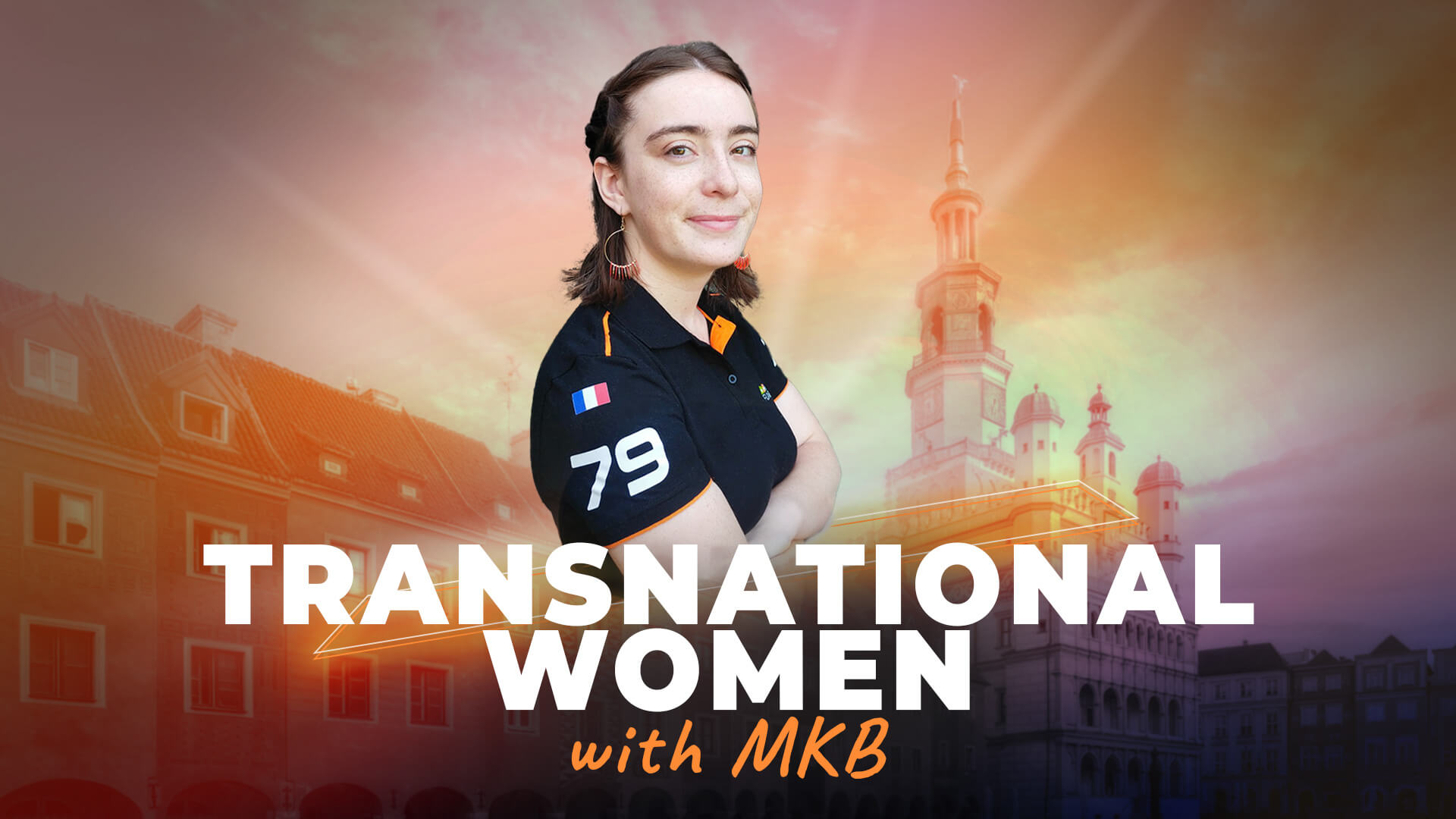
Two bronze medals in Poznan!
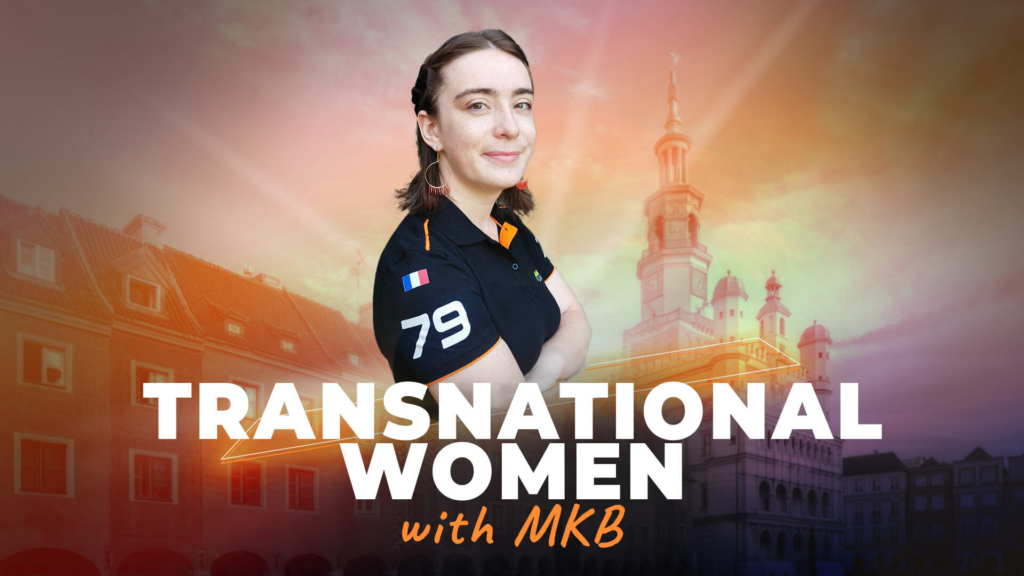
Summary (because it has been an eventful week!)
An official training session for the French Women’s team
From the quarters to the semis
A second bronze medal and the end of the Championships
An official training session for the French Women’s team
The second week of the European Transnational Championships kicked off in Poznan. I played the Mixed event with Luc during the first week and now I was playing with Anaïs all week.
Anaïs is my regular partner. We play for the French Women’s team and train at least one evening a week all year round, in addition to various training camps.
We are playing our first World Championships in the Women’s category in a month and a half, so a week of in-person training is perfect for discovering lots of new situations, fine-tuning our system and, above all, achieving a good result! 🤍




Goats have become the symbol of Poznan thanks to a local legend: a cook attempted to kill two goats which had escaped and began fighting in front of the amused inhabitants and the mayor, for whom the meal was intended.


We were teaming up with Carole and Anne-Laure, our regular teammates in the Women’s team. The good thing is that the format is the same as for the upcoming World Championships: you have to finish in the top eight in the qualifiers to advance to the KO stage. The better placed we are, the better because the top teams get to choose their opponents.
I was very happy with this format because I have only played in one World Championship so far (in the Girls U26 category with my partner Clara 💛) in addition to the World Bridge Games in Argentina (where we didn’t shine, but it was great), and it will allow us to gain some experience since knockout matches can be more stressful!
21 teams were participating in the Women’s category and our goal was clear: play well and bring home a medal if possible!
Success in the round robin
The start of the competition wasn’t easy because… there were only three of us! Anaïs had transport problems and couldn’t arrive until the third match of the first day! We asked to be given a bye for the first match, and Nathalie Frey, whom I had already played with, agreed to complete our team for the second match.
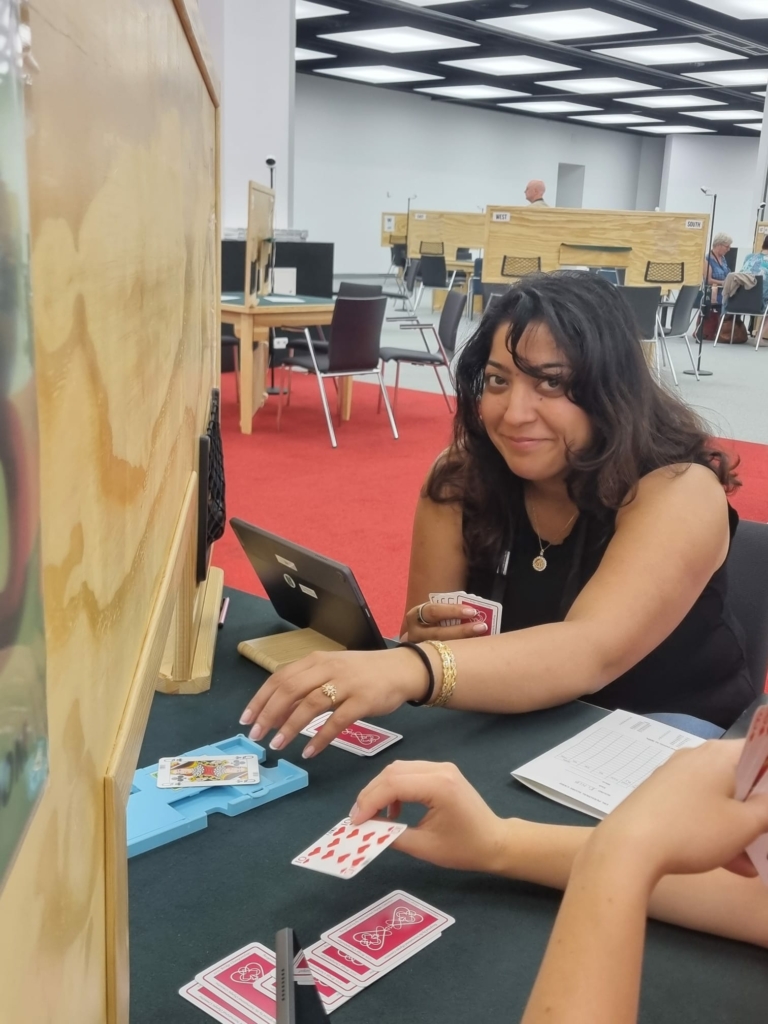
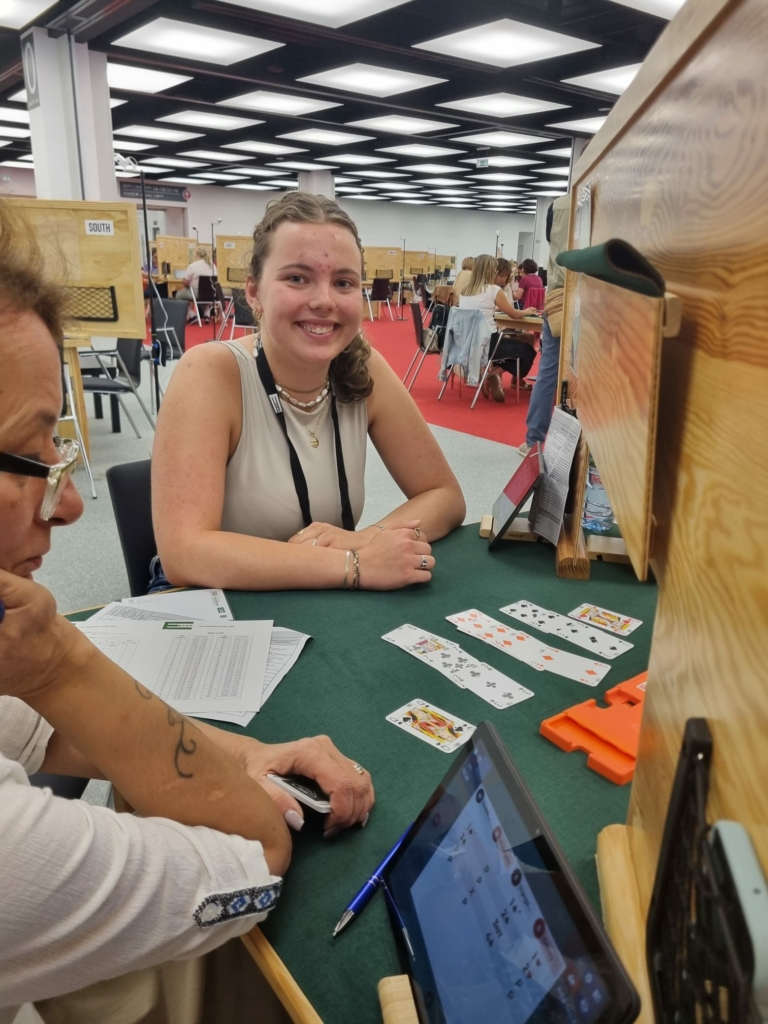
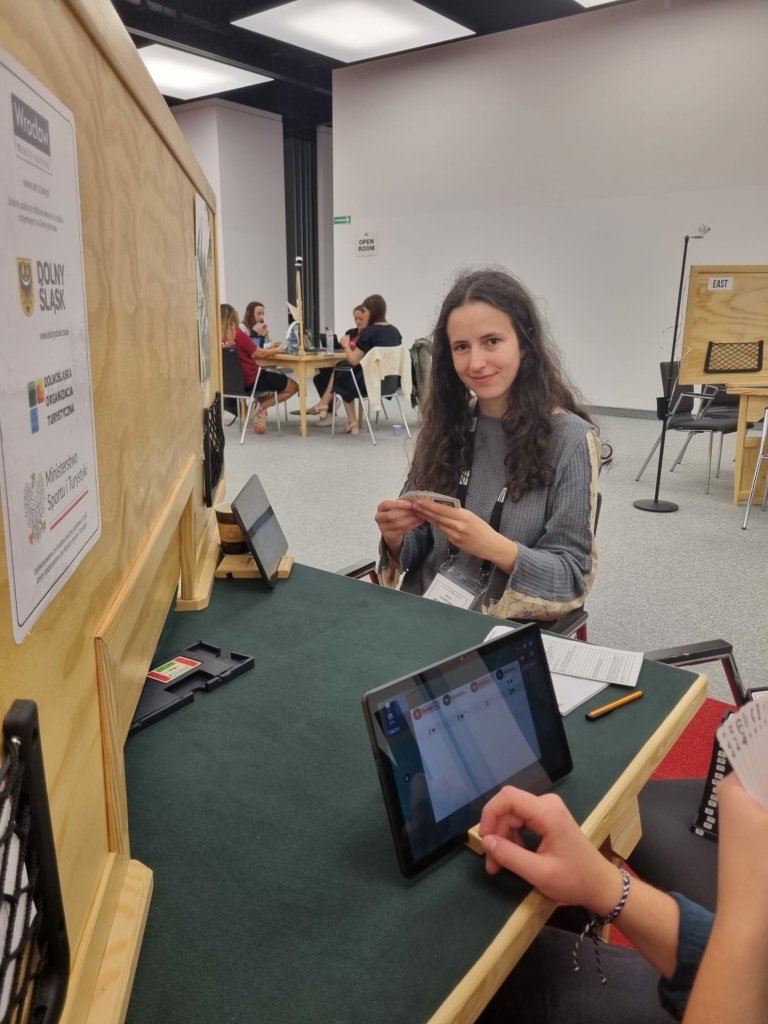
In the other teams were Funbridge ambassador Anam Tebha (who won the competition by the way!) and Team Funbridge members Olivia and Ella.
Fortunately, Anaïs finally arrived and we made it through the round robin after three days!
Let me share some interesting deals from the first days of competition.
Deal 1: A good defence against the opponents’ game
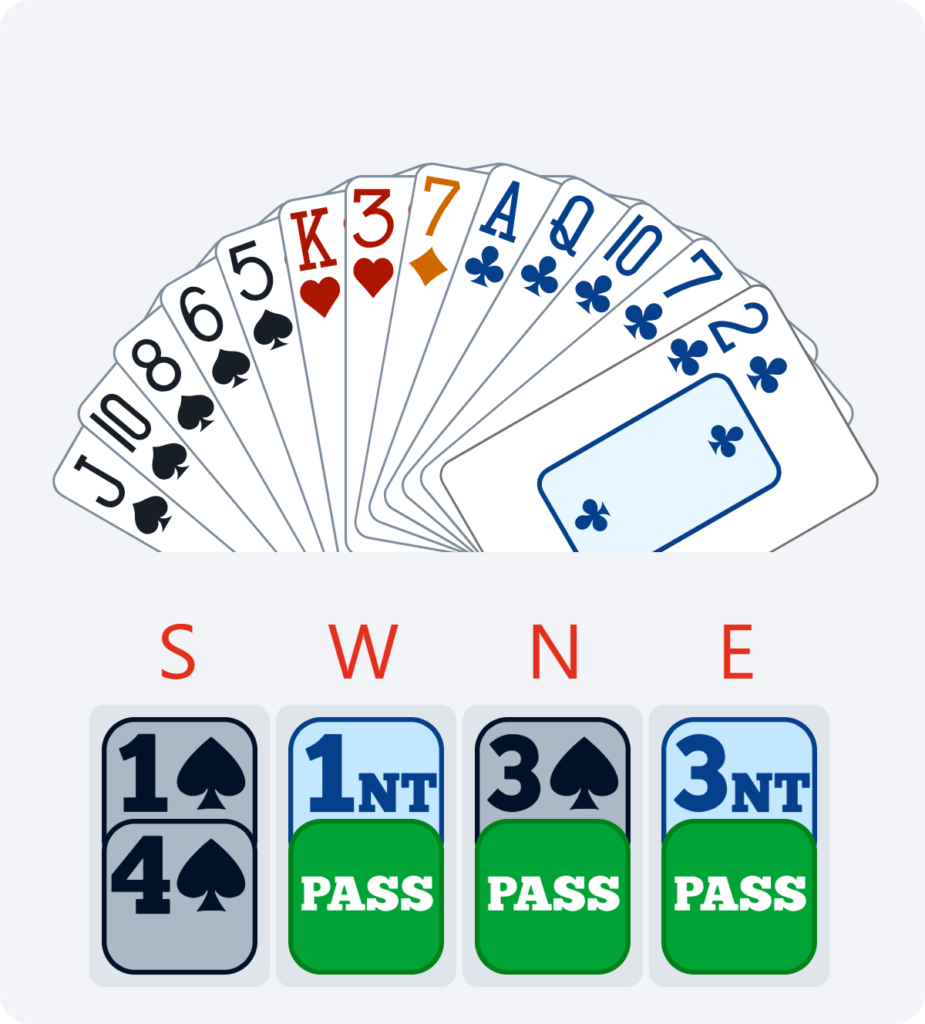
I opened 1♠ in first seat because with a 5-5 you can open with 11 or 10 nice points, as is the case here.
Anaïs made the 3♠ pre-emptive bid over 1NT, showing four trumps and a short suit when vulnerable, and I had to make a decision after 3NT.
I had no trouble bidding 4♠ in a teams match because I was almost certain that the opponents would win the game and that Anaïs had the club shortage. So, I should be able to limit the damage with a cross-ruff, and I could even imagine hands with which I could make 4♠!
I went one down in 4♠ doubled and we can see from the four hands that the opponents were easily making 4♥ or 3NT. 10 IMPs for us!
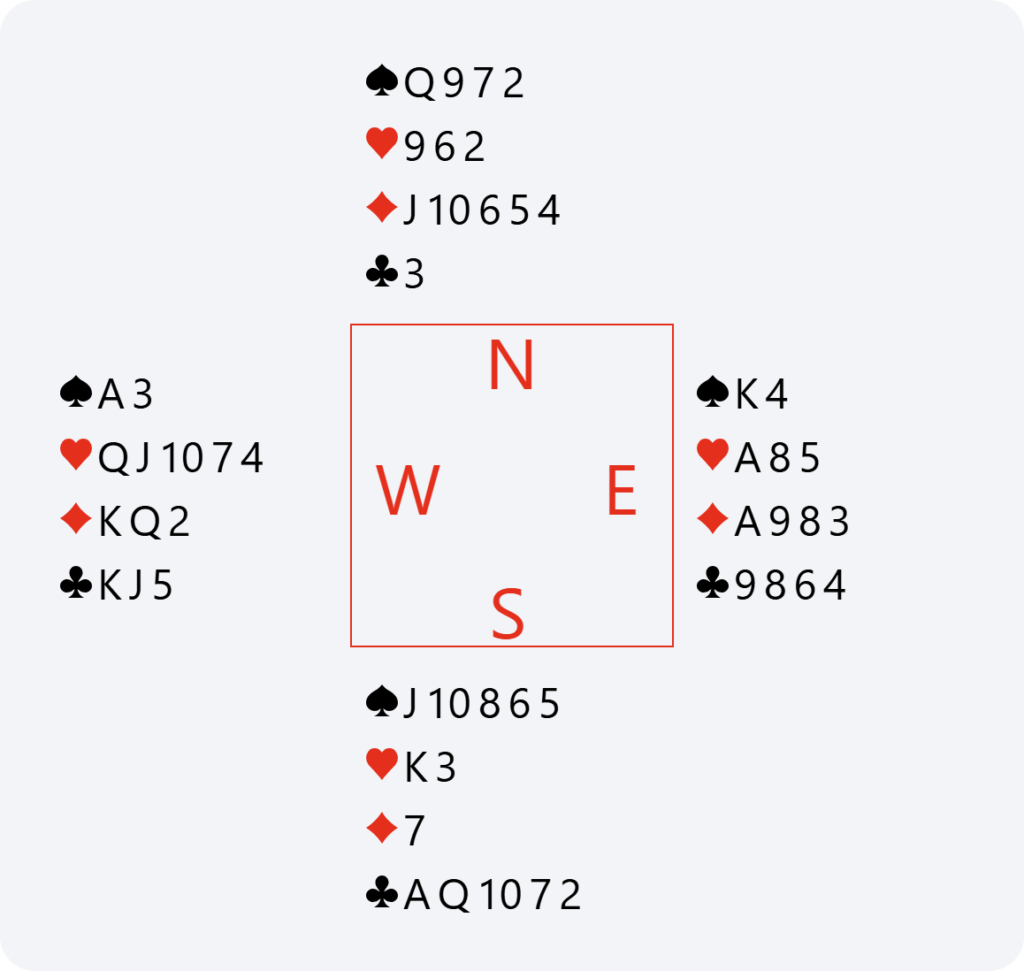
Deal 2: How to take the contract down?
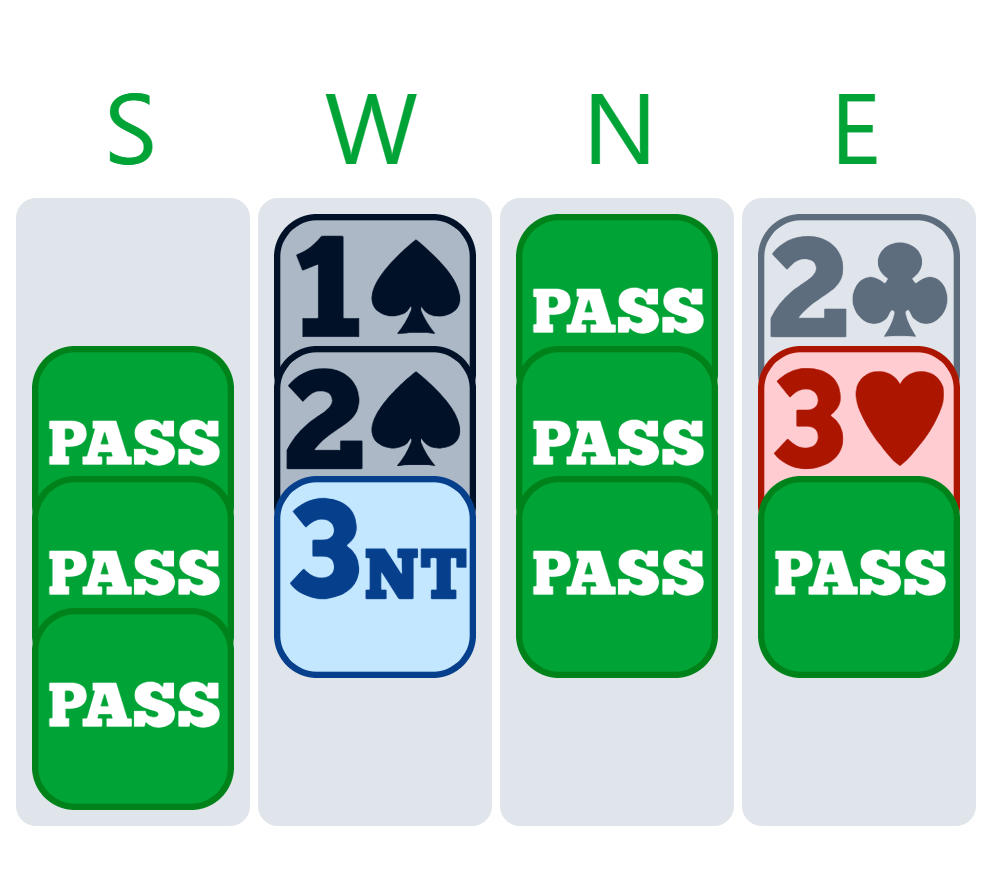
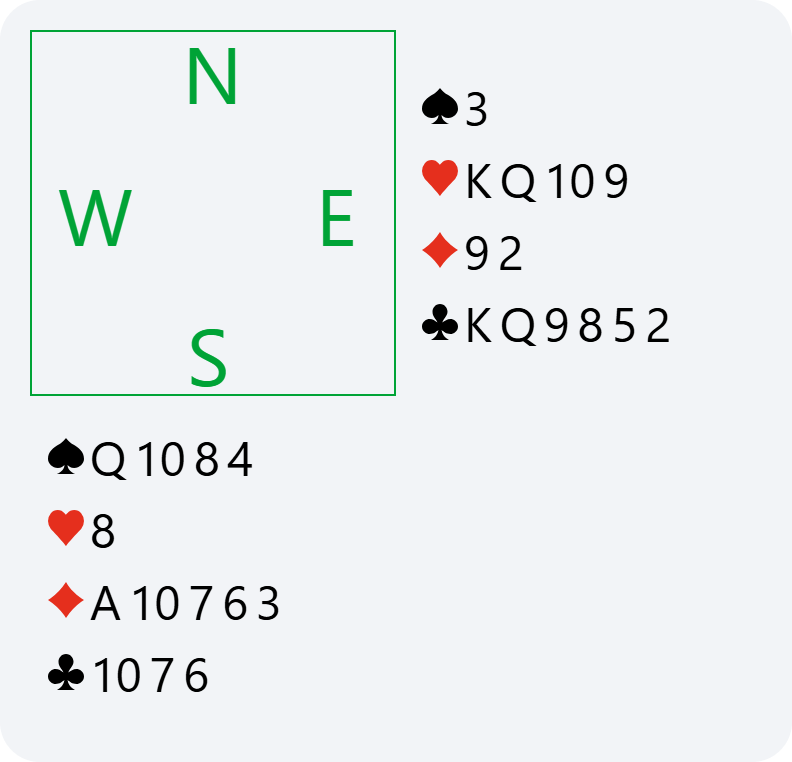
I was defending against 3NT. My partner led the 8 of diamonds and the dummy came down. The aim was to defeat the contract, and I suspected that the declarer would take at least five club tricks and could also unlock some heart ones.
The opening lead of the 8 of diamonds will often come from a top of nothing or an honour-third, bearing in mind that in the latter case, you can also lead your smallest card rather than the middle one if you want your partner to play in that suit again. I was rather thinking of the top of nothing and that we couldn’t set the contract by establishing the diamonds. If I ducked twice to keep the communications, the declarer would have time to take their nine tricks in the meantime.
I focused more on spade tricks. So I won with the ace and returned the 10 of spades, a forcing card to oblige the declarer to play an honour.
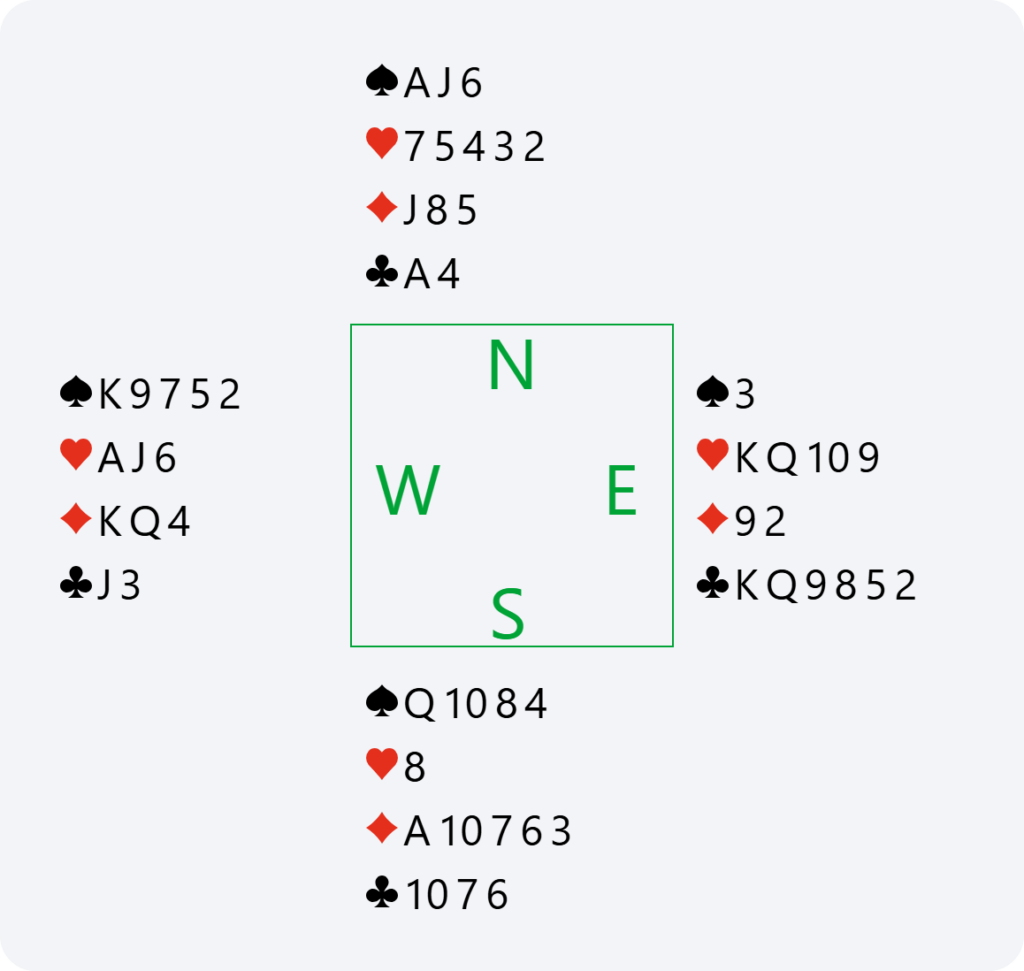
We thus took three spades and two aces for one down. I had several chances to find the return because if I ducked at first, Anaïs could give up the lead to me in diamonds after the ace of clubs to make our three spades. However, it was essential not to play the ace of diamonds and another diamond as the contract would have been given away (Anaïs couldn’t give the lead back to me).
Deal 3: Showing the 5431 distribution with 18-19 points
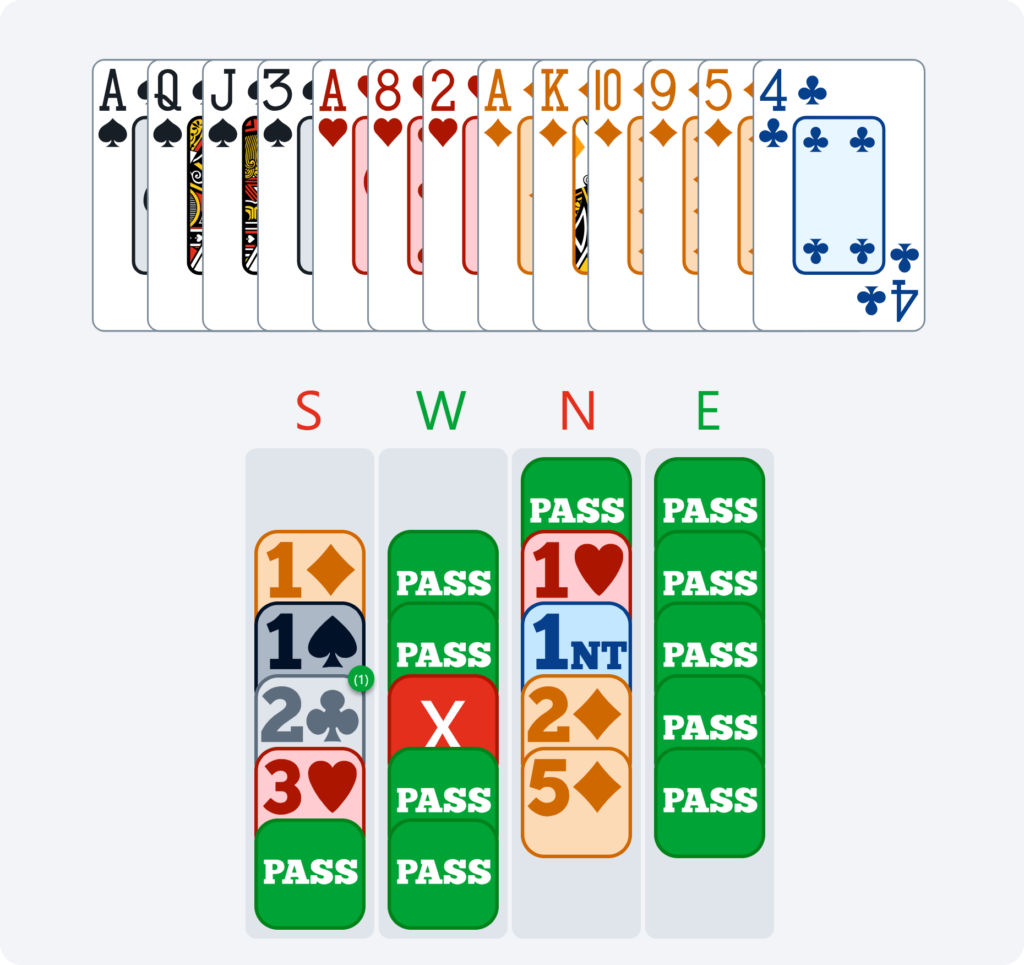
Over 1NT, 2♥ shows a 5431 distribution with three hearts but a maximum hand (a 15-17 hand that could not be opened with 1NT because you have the club shortage).
With a weaker or stronger unbalanced hand, you must first use a 4th suit forcing with 2♣, then bid 2♥ or 3♥ depending on your strength.
Over 3♥, Anaïs correctly bid 5♦, knowing about the 9-card fit. That was the best game with only the queen of diamonds-third and the ace of clubs as losers.
13 to us when opponents went down in 3NT by two!
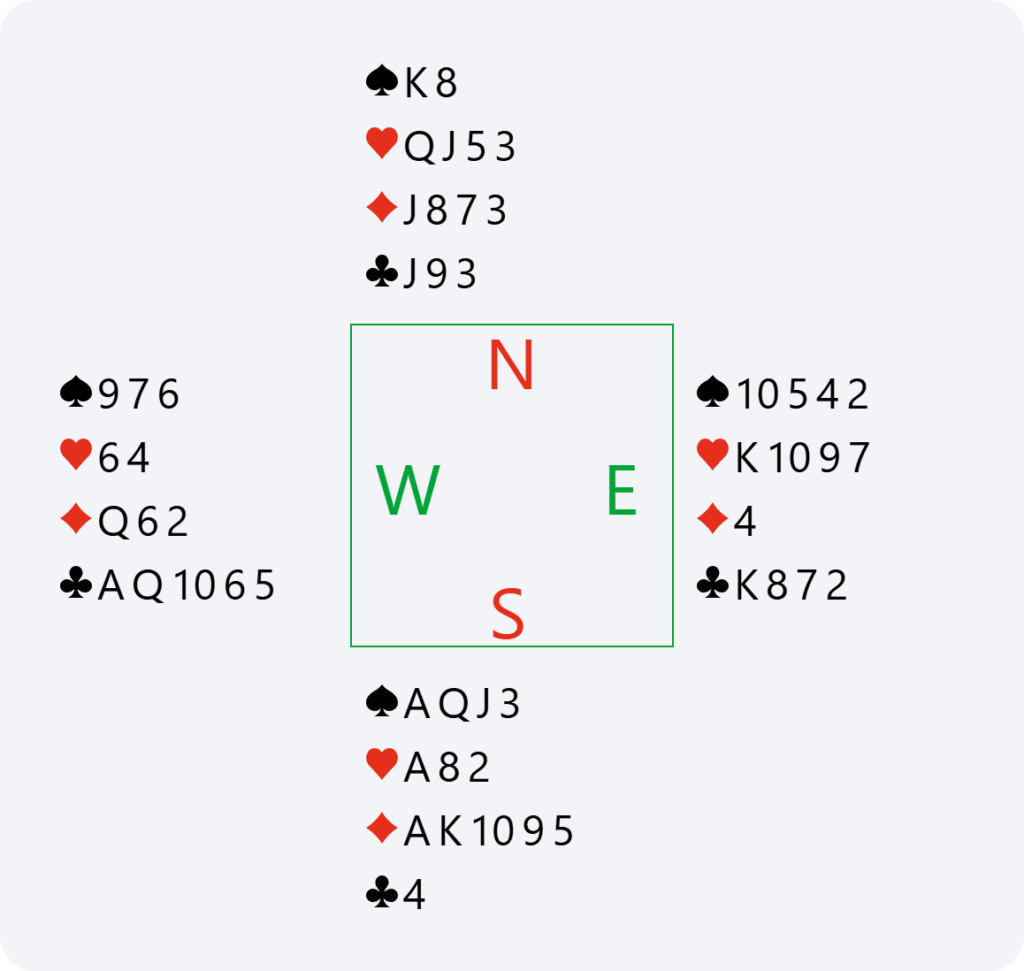
From the quarters to the semis
Finishing top of our group meant we got to choose our first opponent in the quarter-finals and who we will face in the semi-finals. The format for each knockout match was 4 sets of 14 deals.
For the quarter-final, we chose to take on Spain, winning 146-82 over the day. The next day, we faced the Italians, a stronger team but with mixed results.
Deal 4: A 6♠ bid in a competitive auction
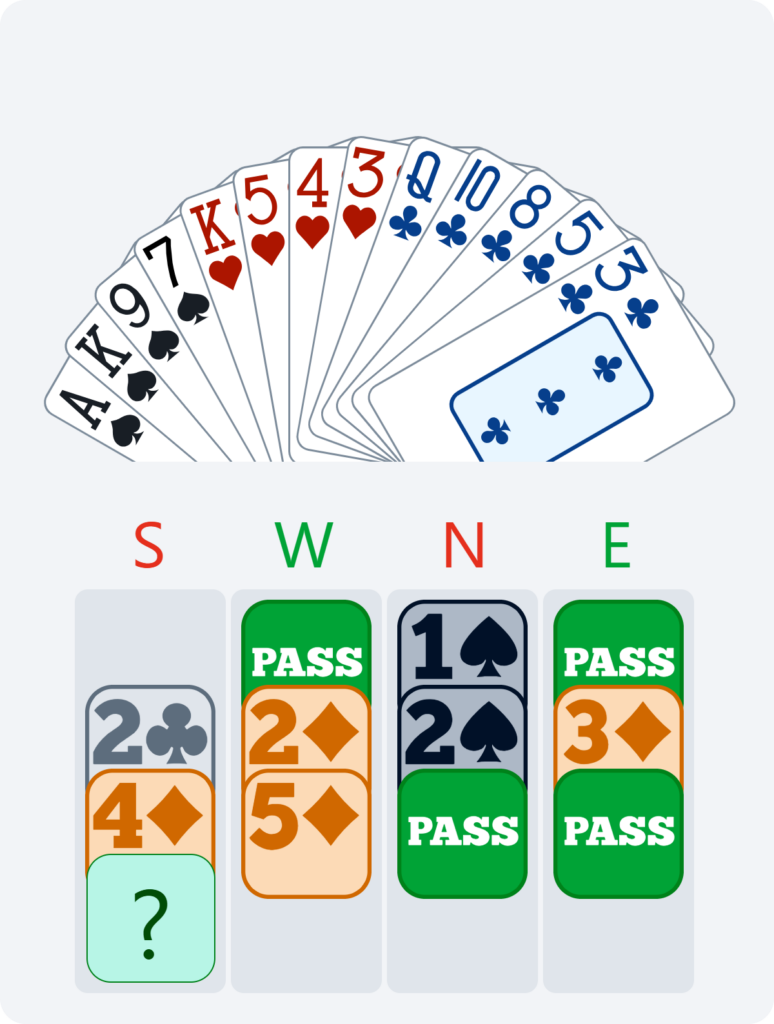
I was sitting South with this hand. The start of the sequence was common. I bid 2♣ so that I could then support in spades in a forcing way, but my opponent chose to overcall with 2♦. The advantage: I knew early on that my partner had six spades.
Over 3♦, I said 4♦ to show a shortage in that suit and a slam-invitational hand (I can bid forcing 3♠ without this diamond shortage).
West further pre-empted with 5♦ and my partner passed. But what does this pass show? As 4♦ accurately describes my hand, it would be more appropriate for her to end the bidding, either with 5♠, 6♠ or a double over 5♦.
When she passes, this pass is forcing and says “it’s your turn to choose”. So she had good news for the slam, but she couldn’t make the decision on her own.
With my diamond void and the trump ace-king-fourth, I signed off in 6♠, hoping for fitting cards in one of my suits in her hand. She made the contract after ruffing three diamonds in the dummy and conceding a heart trick.

Deal 5: After a Landy
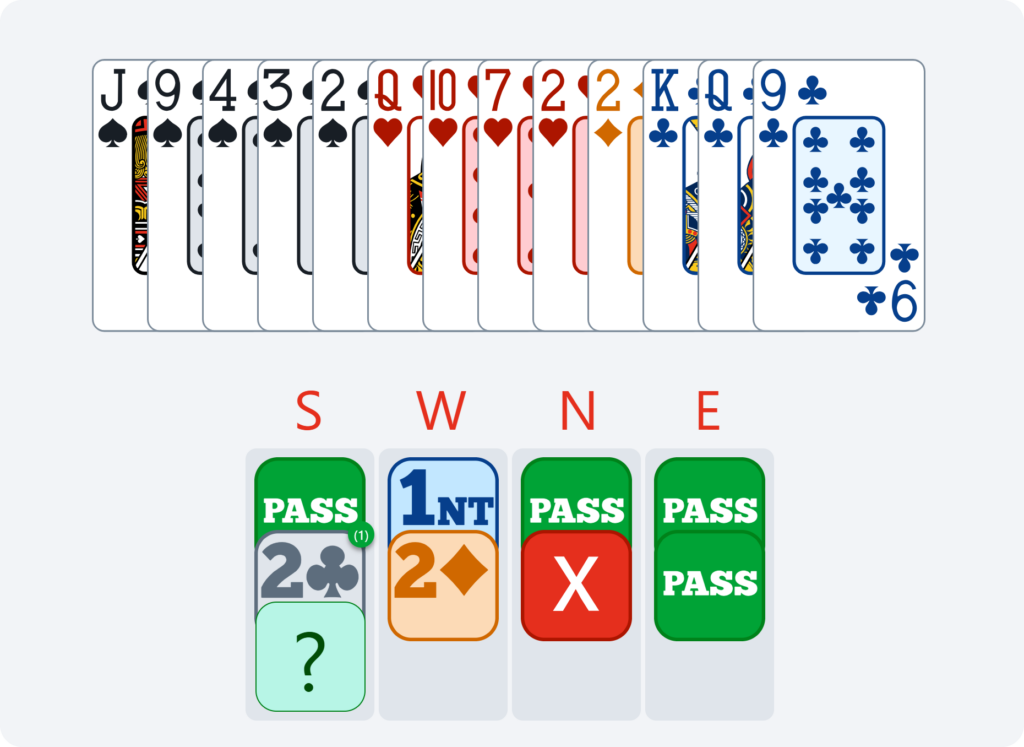
This situation happened to my opponents (I was sitting West on the deal). South initially passed and then reopened the auction with a Landy to show a major two-suiter. After West’s 2♦ (only to be bid with six good cards when vulnerable), what does North’s double mean?
To determine whether it is penalties or take-out, ask yourself: which is more useful, a penalty double or using the “my bid was stolen” double? 2♦ over 2♣ (without overcall) would be a relay for the longest major, very useful in the event of a major 3-3 to play in 5-3 fit and avoid 4-3.
Here, if North passes 2♦, we have no reason to bid again in South. We have already announced our hand, and it would become dangerous to continue bidding without any guaranteed fit. This is why doubling 2♦ is very useful for saying “show your best major” and avoiding the 2♦ contract or having to guess your partner’s major.
A first bronze medal

We lost the semis by about 70 IMPs, but we weren’t too disappointed because the Italians played a very good game, successfully making games.
We are very happy to bring home a medal and to have understood each other so well as a pair with Anaïs!
The Italians finished second, behind the half-Polish, half-American Team Parker (Anam Tebha, Christina Parker, Justyna Zmuda, Danuta Kazmucha, Linda Robinson, Katarzyna Dufrat).

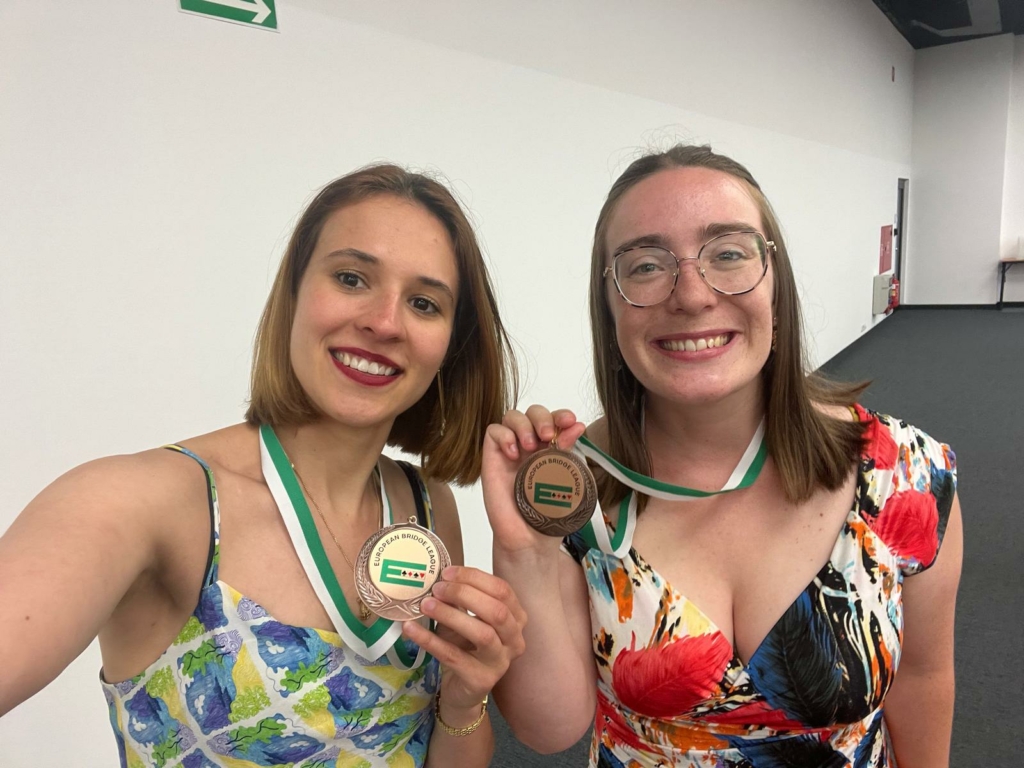
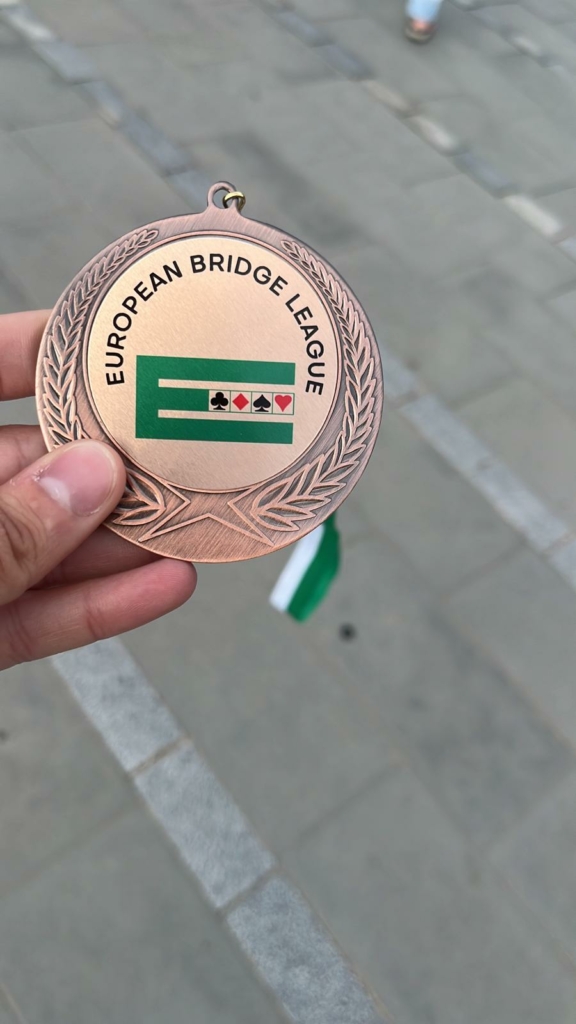
The BAM: a tougher challenge
The Board-A-Match welcomed all Open teams that were eliminated as the days progressed, in addition to all teams that had initially planned to play in the event. The level was high and we thought it would be good practice to compete against Open teams rather than Women’s teams for a change. I think we were the only all-female team that preferred to play this BAM rather than the Women’s Pairs.
The BAM concept combines pairs and teams competitions: we compare each other on two tables as in a teams match, but the most important thing is to score more than the other team to win the deal. Thus, if North-South makes 2♥= at one table and 6♥ doubled -8 at the other, the deal will still be won at one table only, just as if they had made 2♥ -1. There are 2 points for each deal won, 1 point for a tie and zero points for a loss on the deal.
We entered the BAM following our defeat against the Italians, and there were two days of qualifying left before the final on the last day. Half of the teams qualify and we finished last to qualify! We were very pleased because the field was still quite strong.
We played the final the next day, our last day in Poznań. Here are some deals from this final.
Deal 6: Do not give 2NT away
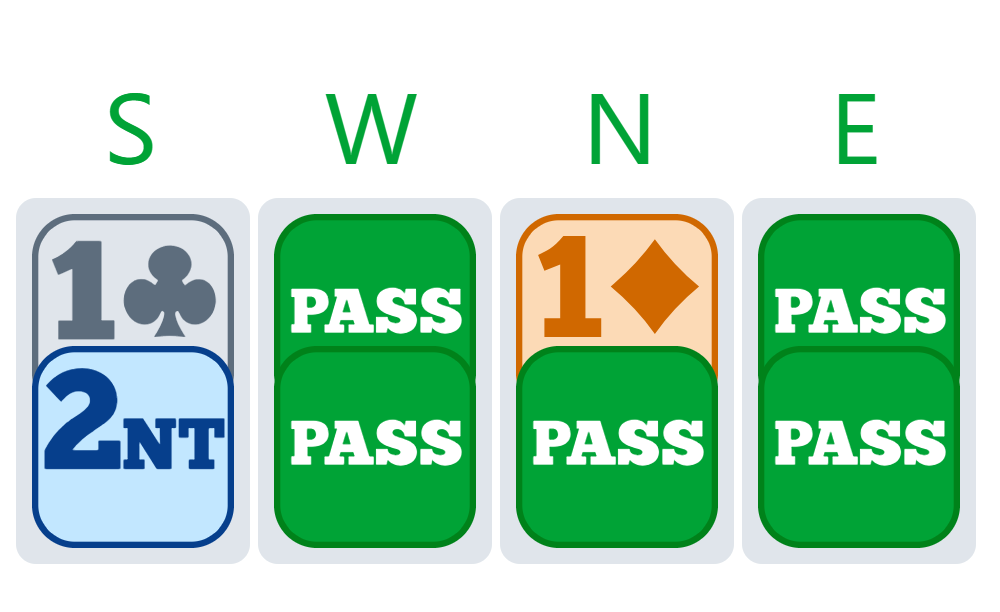
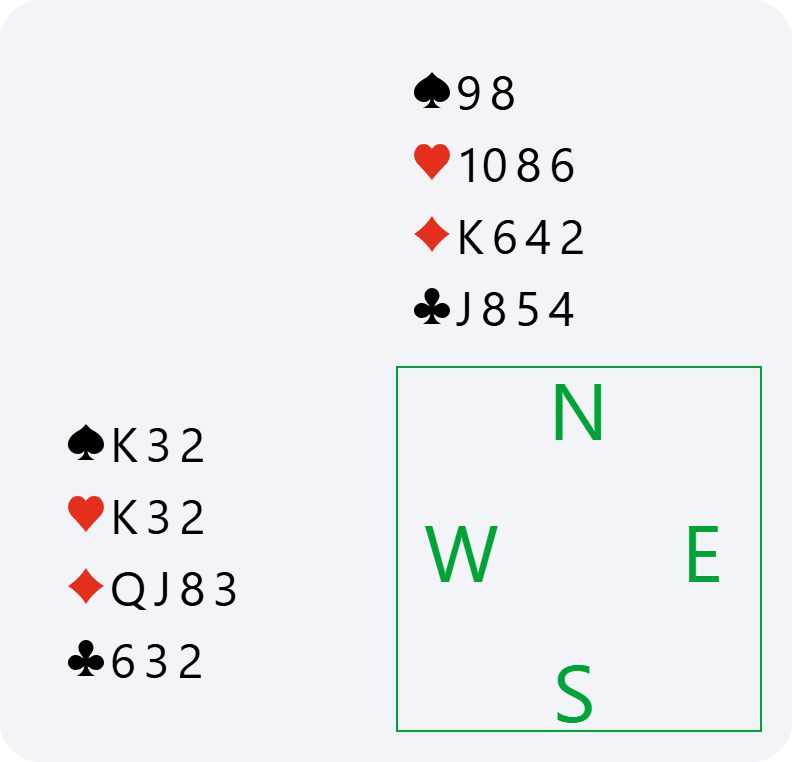
I was on the lead in the 2NT contract (I was sitting West this time). Perhaps there are reasons to lead a major rather than the other, but I chose to start with spades somewhat at random. The 10 appeared in my partner’s hand, taken by the declarer’s queen.
They returned the queen of clubs, to my 6 (Smith signal to say that I am not convinced about the spades) and my partner’s king. She played a spade to my king (the 4 by Anaïs and the 5 by the declarer). And it was my turn. How to defeat the contract?
I knew that the declarer had at least ace-queen of spades and probably ace-queen of clubs. Now I needed to know whether their points were in hearts or diamonds. The fact that my partner returned a spade despite my Smith signal made me think that she had no interest in betting on hearts.
I played the queen of diamonds, which won the trick, followed by the jack to pin the 10 if it was in South. The declarer ducked twice in the suit. I knew Anaïs had the remaining stiff ace of spades in that suit. I didn’t want to establish dummy’s diamond, so I played a neutral spade now that I knew South had two heart honours. As the declarer only had three cards in clubs, they only had one discard and we were able to cash the ace of diamonds and the king of hearts.
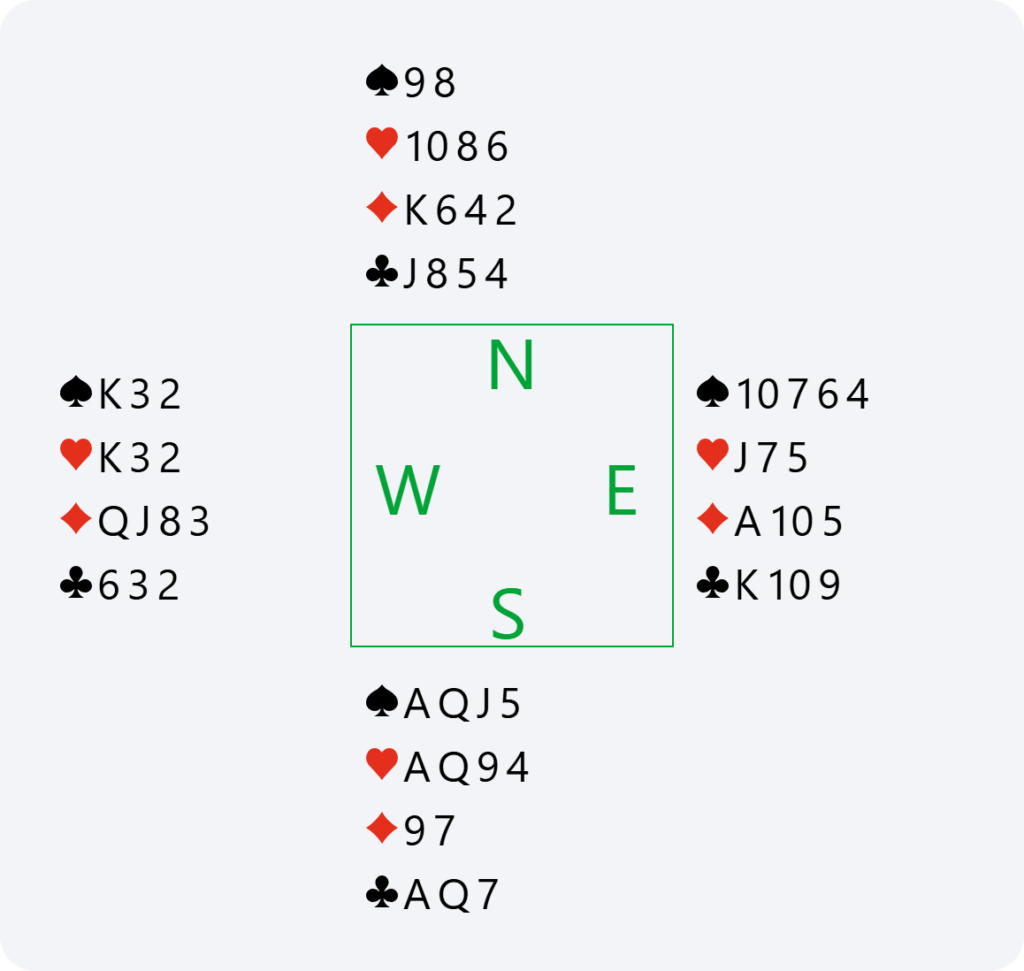
Deal 7: More difficult in pairs than in teams!
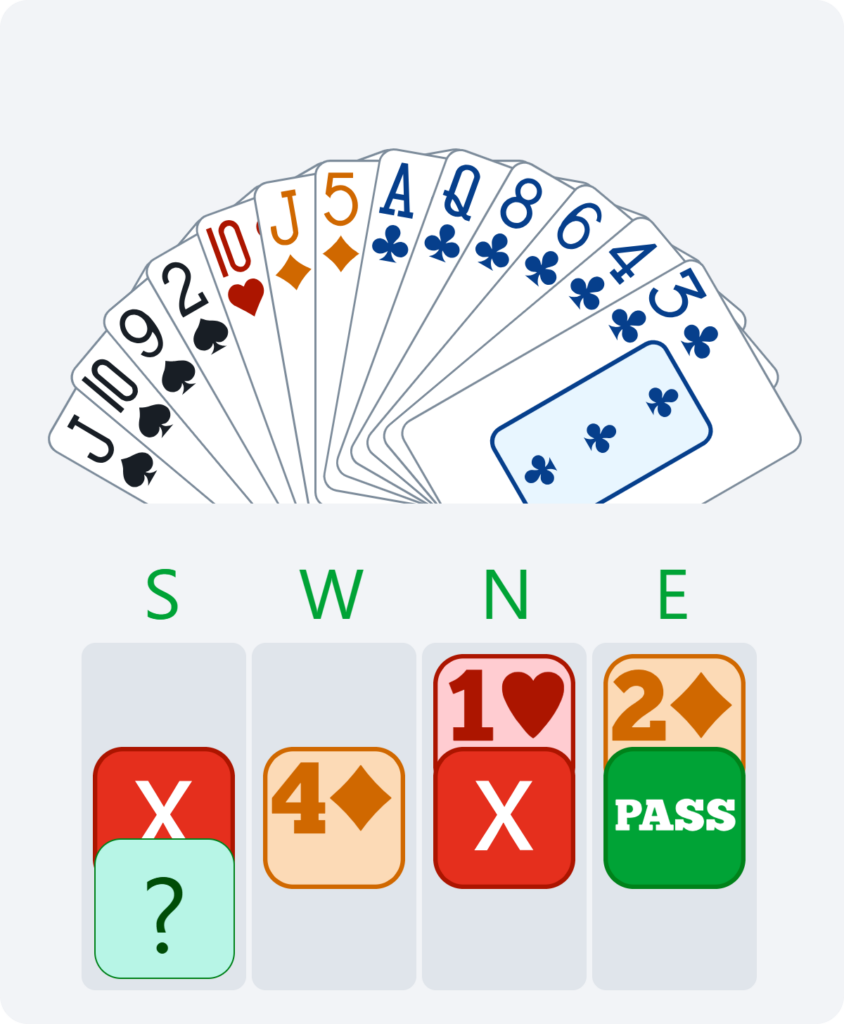
I doubled for take-out over 2♦. The ideal hand for this double is a 5422 distribution with two hearts and four spades, but this hand is close enough and in response to your partner’s 2♥ bid (which may come from only five cards), we can return to 3♣, a forcing pass bid.
Anaïs then doubled the pre-emptive 4♦ bid, which often shows three spades and extras for playing in game.
The question was: should I pass or say 5♣? In my opinion, in teams, it would be better to pass as we are certain to get a plus score, between 100 and 500. But in BAM, this is not enough!
I thought Anaïs would most likely be short in diamonds, and probably 5431 with four clubs. I bid 5♣, which worked out well on the deal as I made the contract after giving up a diamond and a spade. Many tables preferred to play in 4♦ doubled for two down, and I was not really sure what was the best play in absolute terms.
The four hands:
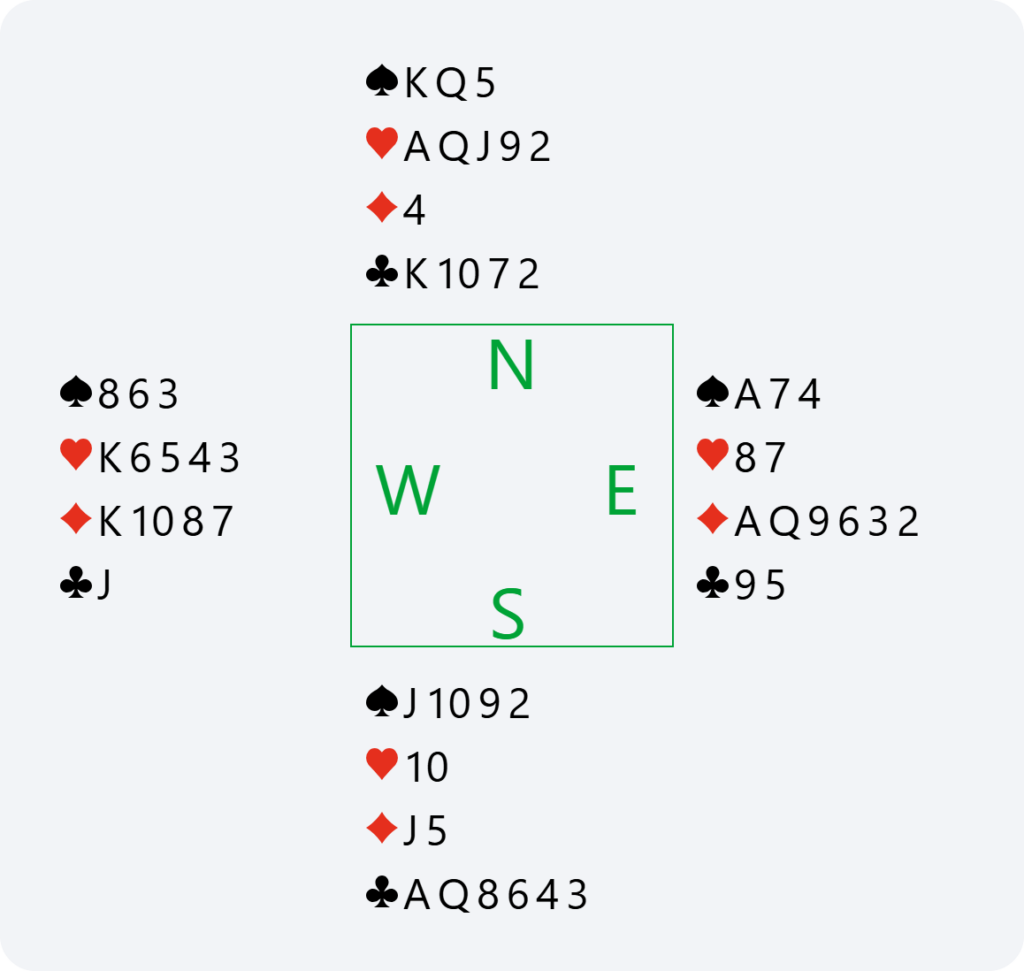
A second bronze medal and the end of the Championships
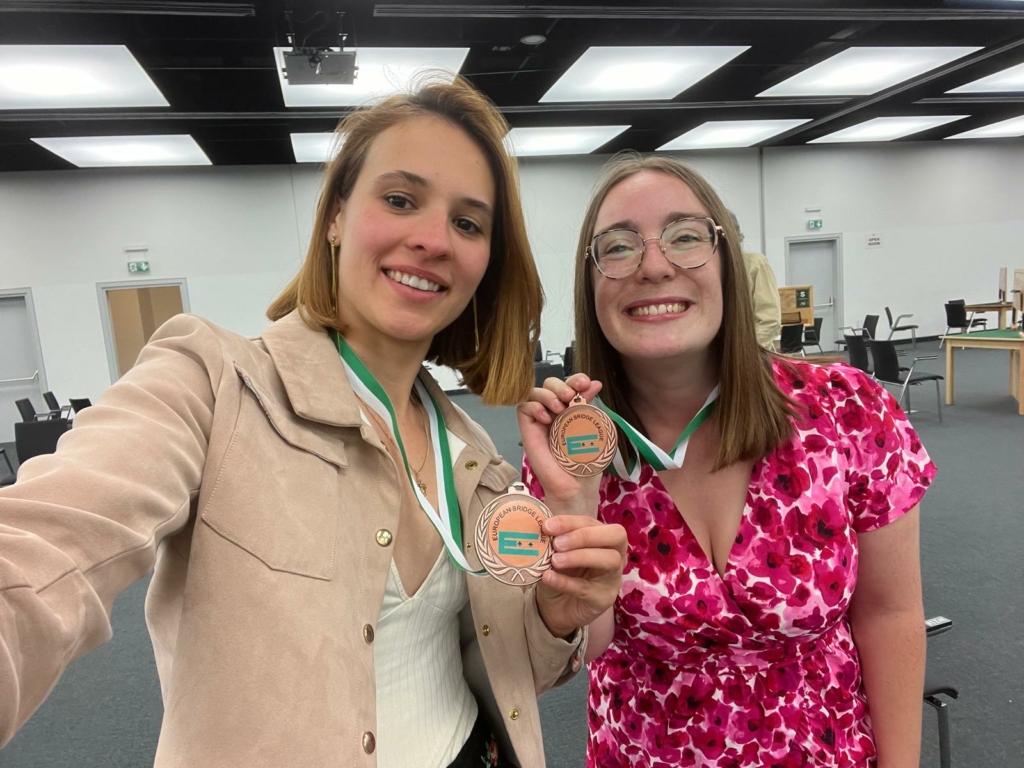
After the 46 deals that made up the final, we finished on the bottom step of the podium, despite a rather annoying carry-over (without it, we would have been second, one point behind the winners–a French team).
We are delighted with this nice surprise because after qualifying by the skin of our teeth, our only goal was not to finish last!
I am very happy to have come and play for two weeks in Poznań. Of course, it’s great to have achieved good results, but the most important thing is that I feel we have made progress overall. 💪
I really hope to do well at both World Championships this summer, whether it’s in U26 for my first time in this category for this kind of event or in the Women’s category with Anaïs.
To be continued! 🙃
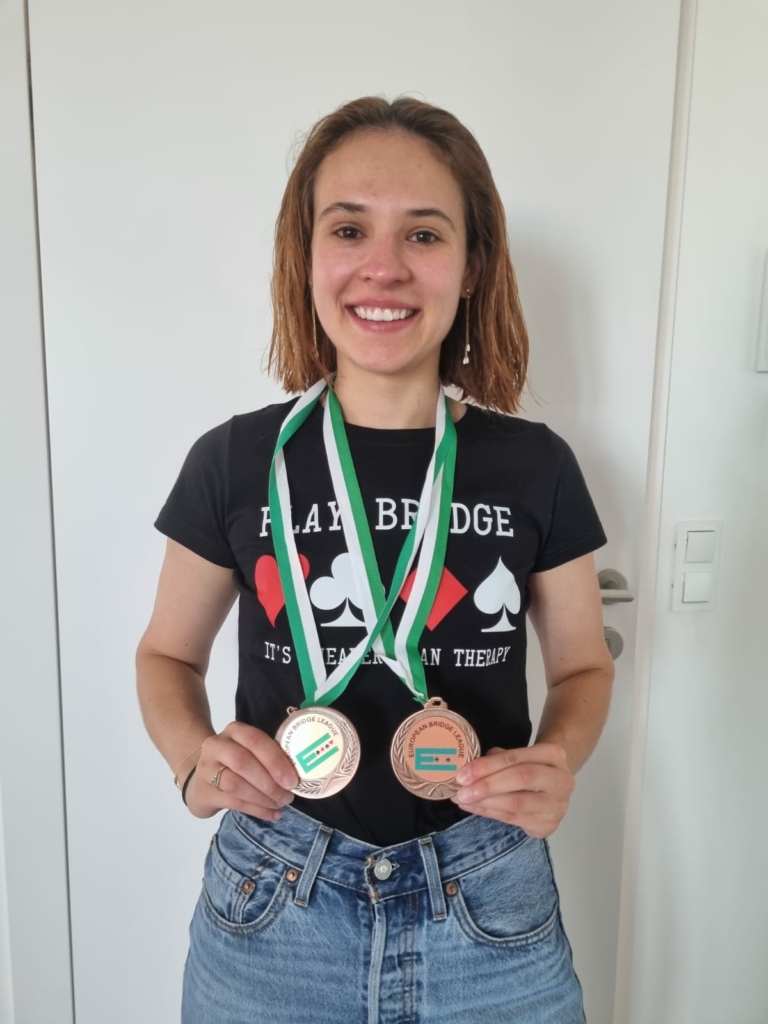
What did you think of this article?
Please feel free to leave me a comment, I respond to everyone. See you soon for a new article! ♥



